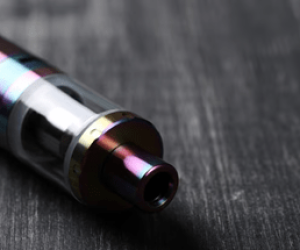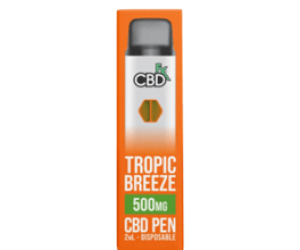Are you considering using medical cannabis to relieve your pain or treat an illness, but don’t know whether to smoke it or vape it? Or maybe you’ve decided to switch from smoking cannabis to vaping because of the potential health benefits. Whatever your reason for wanting more information on this subject, in this blog post we’ll explore the differences between smoking and vaping medical marijuana. We’ll look at both their advantages and disadvantages so that you can make an informed decision about how best to use medical cannabis for your needs. Keep reading if you’re ready to learn more!

Inhalation of Cannabis Compounds
Inhaling cannabis, whether through smoking or vaping, allows the active compounds in the plant to enter the bloodstream directly through the lungs. This rapid absorption leads to a quick onset of effects, typically within minutes. When it comes to the best methods of delivery for medical users, vaporizers and smoking are the most popular choices. Both methods allow for precise dosing, allowing patients to titrate their doses as needed.
Immediate Effects of Smoking Cannabis
Smoking cannabis is a traditional method of consumption and offers immediate relief due to its rapid absorption into the bloodstream via the lungs. The effects can be felt within minutes, making it an effective method for those seeking quick relief. However, it’s important to note that smoking cannabis can also lead to a stronger and more uncontrollable high compared to other methods of consumption due to the rapid onset. Also, since combustion is involved, there are possible adverse effects on lung health to consider, similar to any substances smoked. These include coughing, bronchitis, and other potential respiratory issues over time.
Immediate Effects of Vaping Cannabis
Vaping, or vaporizing, cannabis is a modern alternative to smoking. It involves heating the cannabis to a point where it releases its active compounds as vapor, which is then inhaled. Like smoking, the effects of vaping cannabis can be felt almost immediately, making it a viable option for those seeking quick symptom relief.
However, vaping often results in a more controlled and smoother experience compared to smoking. This is because the temperature can be adjusted to release specific cannabinoids, allowing for a more tailored experience. Another advantage of vaping is that it typically produces less tar and carcinogens than smoking, as it does not involve combustion. This may lead to fewer respiratory problems over time. However, research is ongoing, and users should consider all potential risks and benefits.
Health and Safety Considerations
When considering both vaping and smoking medical cannabis, it’s crucial to take into account the health and safety implications. As mentioned, smoking cannabis can potentially lead to respiratory issues due to the combustion process. This method of consumption may lead to the inhalation of tar and other harmful substances which are associated with certain health risks.
On the other hand, vaping is generally considered a safer option due to its lack of combustion, leading to less production of tar and carcinogens. However, it’s important to note that the safety of vaping can greatly depend on the type of vaping device used and its temperature settings. Additionally, while vaping may decrease some risks associated with smoking, it does not eliminate all potential risks, and more research is needed to fully understand the long-term effects of vaping.

Long-Term Health Implications
Long-term health implications of smoking and vaping cannabis vary, and ongoing scientific research continues to uncover more about these effects. Prolonged smoking of cannabis, like tobacco, can lead to chronic respiratory conditions, such as chronic bronchitis. The heat and smoke from the burning cannabis can damage the lung tissue and lead to the formation of tar in the lungs, similar to tobacco smoke.
For vaping, while it has been touted as a healthier alternative due to the lack of combustion, its long-term effects are still not fully understood. Some studies indicate potential risks associated with the additives and solvents present in vape oils. There’s also the concern about the damage high-heat vaping can cause to the lung tissue over time.
It is vital for medical cannabis users to keep up with the scientific research, to understand the potential risks and benefits of both methods. It’s also important to use these methods responsibly and in moderation and to seek professional medical advice when choosing the best method of consumption.
Dosing and Control with Vaping
One of the key benefits of vaping medical cannabis over other methods of consumption is the high degree of control it offers overdosing. With the ability to adjust the temperature settings on most vaping devices, users can tailor their experience by choosing to release specific cannabinoids at certain temperatures. This allows for more precise control over the effects, which can be particularly beneficial for medical users who need to manage their symptoms effectively.
Vaping devices often have features that allow users to measure their dosage accurately. This is crucial for medical users who need to adhere to specific dosing guidelines for their treatment. However, like any method of consumption, it is essential to start with a low dose and gradually increase until the desired effects are achieved. Always consult with a healthcare professional when adjusting dosing measures for medical cannabis.
Another point to consider is the consistency of vaping. Because the cannabis is heated and not burnt, the vapor produced is often more consistent than smoke. This can result in a more predictable and controlled experience, which can be especially valuable for those using cannabis for medical purposes. However, it’s critical to note that individual experiences with vaping can vary, and what works best for one person might not work for another.
In conclusion, both smoking and vaping medical cannabis have their unique advantages and disadvantages. As with any medication, it’s essential to consider the potential health implications and consult with a healthcare professional before making a decision on the best method of consumption for your needs. It’s also crucial to stay informed about new research in this field, as our understanding of the effects of cannabis continues to evolve. Whether you choose smoking or vaping, remember to consume responsibly and use only as directed by a medical professional. So go ahead, explore your options, and make an informed decision for better health!


